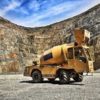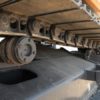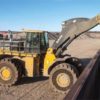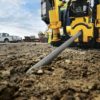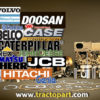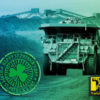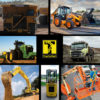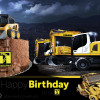Compaction: The Right Roller for the Job

There are many variables that determine the right roller for each compaction job. The first is whether you’re compacting soil or asphalt. Other factors are the width of the area to be compacted, the final density required, the grade of the area to be compacted, the type of asphalt mix, soil type, as well the type of materials that lay below the lift being compacted. There are also considerations related to weight, frequency, amplitude and centrifugal force that will have an effect on final density.
Intelligent compaction technologies—ranging from simple meters to automated systems that adjust machine performance for the operator—help simplify operation and allow contractors to improve productivity and eliminate costly rework by getting the job done right the first time.
Soil Compaction – Smooth Drum, Pad-foot Drum or Pneumatic?
When looking at the type of soils being compacted, more granular materials such as sand and gravel typically require a smooth drum or a pneumatic roller. These smooth surfaces, along with optimal moisture levels in the soil, will allow granular materials to consolidate more efficiently. A vibratory compactor will allow for deeper compaction depths than a pneumatic roller.
More cohesive materials, like clay, require a vibratory pad-foot drum. Cohesive soils tend to stick together and slip over each other during compaction. For these types of soils, it is critical to shear the soil with the pad-foot drum in order to achieve the desired compaction density.
Compaction Width
Contractors need to look at meeting the required compaction density in the least amount of passes, but a wider compaction footprint isn’t always better. Some contractors look at a large road job and immediately think an 84-inch drum would get the job done faster than a 66-inch drum, but a 66-inch drum may ultimately be the ideal configuration for getting the job done in a comparable number of passes while optimizing overlap, which helps reduce over-compaction.
Weight
Weight is also an important consideration when taking into account the size of lift you are working on and the desired final compaction density. For pneumatic machines it is all about weight. It is critical to look for a machine that can have a variety of weight configurations to maximize the number of applications the machine can be geared towards. For vibratory rollers, the static weight of the machine plus the force generated by its eccentric motor creates centrifugal force, which helps determine the achievable compaction depth. Too heavy of a machine used on a thinner lift can cause over-compaction, and too light of a machine on thicker lifts can cause the base of the lift to not be compacted properly. In some cases a lighter machine may have a higher centrifugal force due to higher amplitude.
Soil compaction with significantly deeper lifts will require a heavier machine with greater centrifugal force in order to reach the proper depths. With asphalt, where the lifts are considerably thinner, frequency is more important than centrifugal force. The thinner the layer, the less required force, therefore lighter machines may have an advantage in some cases.
One of the common mistakes we see, specific to soil compaction, is using too light of a machine, or laying lifts that are too deep. Contractors build deep lifts in the hopes of getting the job done quicker, but the likelihood of soft spots increases if that machine doesn’t have the proper centrifugal forces to compact the entire lift. The contractor then either has to rent or switch out for a larger machine to hit those depths, which can have a major impact on jobsite productivity and scheduling. It is important to know the realistic capabilities of the equipment you have on site.
Water Tank Size
Water plays an important role in preventing asphalt from sticking to the rollers or tires. Look for a large water tank that allows compaction equipment to run all day without having to stop and fill up, which will help to maximize uptime and productivity.
Crab Offset and Curb Clearance
The ability to offset drums is important for a couple of reasons. When compacting asphalt on a roadway or another large-scale project, it’s important to bind each pass together. By having a compaction machine that allows you to have the rollers either in-line or offset, you’re able to have an overlap of up to six inches to bind the two passes together. It also offers tighter turning radiuses for added maneuverability when compacting in confined areas.
A roller with high curb clearance also helps in terms of maneuverability and is excellent for work in residential or commercial areas by allowing the operator to work right up to existing curbs and other low structures.
Smart Design – Comfort and Serviceability
All construction equipment is becoming more operator- and user-friendly in terms of comfort – important when sitting all day on a machine. Things to look for while sitting in the cab of that machine are visibility to the drums (sloped hoods to the rear are an asset on soil compactors), seat maneuverability (sliding and rotation) within that cab for both forward and backward operation, and intuitive controls at your fingertips for adjusting tire pressures, amplitude and/or frequencies on the fly.
Look for compaction equipment that has scheduled maintenance and service items in easily accessible locations. This is not only important in terms of convenience, but is also critical should the machine need servicing during the course of a job. When compacting asphalt, it must be compacted while it is at a certain temperature. If the temperature drops too low, the asphalt could be ruined. So if a machine goes down and you can’t service it quickly or get a backup, your job deadline may be at risk.
Compaction Meters
It is now very common to see compaction meters made available from compaction equipment manufacturers. These meters measure the amount of rebound at each drum as they go over an area. If the machine passes over an area and does not register any rebound during soil compaction, for instance, that lets the operator know they’ve hit a bad area that requires attention. On the contrary, if the meter is registering full rebound, the operator will know to avoid over-compaction of that area. The compaction meter helps identify areas that will require added attention prior to testing.
High-Frequency Vibration
One of the relatively recent advances in compaction technology is the introduction of high-frequency rollers. With some machines offering frequencies up to 67 hertz or above, these higher frequency ranges offer operators more control over compaction performance based on the thickness and density requirements of the lift.
When combined with variable amplitude settings these machines can be dialed in to better handle thinner lifts (low amplitude/high frequency) and thicker lifts (high amplitude/low frequency). Centrifugal force can also be adjusted to best match the thickness of the lift and the desired depth of compaction. The ability to dial in and finely tune these settings allows for greater onsite productivity, and further reduces the possibility of rework.
Real-Time Feedback and Operating Instructions
Some modern compaction equipment provides the operator with recommended operating settings/conditions based on the feedback it gets from real-time conditions of the compacted material. This is based on desired stiffness settings. The desired stiffness is preset based on a benchmark pass that’s already met requirements. It lets the operator know within a range of where they should be operating as the compactor travels along. The display screen shows operators the miles per hour they should be traveling as well as the level of vibration that should be set. The operator still handles all the adjustments, but the system provides them with operational guidelines.
It’s important to note that these technologies measure stiffness, not density. Nuclear density meters, the most accepted measurement tools in the industry, measure how dense the ground is.
Measuring stiffness is said to be a better indicator than density. If a company strictly goes off of the data from a nuclear density meter, they’re not getting load-bearing capabilities. A nuclear density test is still required, but it will be more accurate and there will be a higher chance of passing if intelligent compaction features are used.
Automation Features
Some modern compactors feature automation technology that will adjust the vibration of the drums automatically as it goes along, so the only thing the operator worries about is steering and the speed at which they’re traveling. These systems are more advanced and rely more heavily on electronics, so some manufacturers place these systems strictly into enclosed cab units to avoid dust and debris and protect the electronic components.
Temperature Readings
Another important factor that a good intelligent compaction system will monitor in paving applications is the temperature of the asphalt. Depending on the mix of asphalt, it will have to be compacted within a certain temperature range. As soon as it starts to get too cold, it will no longer compact correctly. Asphalt temperature is extremely important, and these systems help ensure that compaction is taking place at an appropriate temperature.
Mapping Technology
Documentation is a standard function on many intelligent compaction systems. The system can document and display—either via printout or on a computer—the details of every pass so the contractor can show that the job was performed to spec. The future of documentation and intelligent compaction, however, lies in the hands of mapping technologies. Unlike the standard documentation feature, owners can plug in the coordinates of the jobsite and match that up with the information documented through the intelligent compaction system. This new combination of data and location helps show where the passes were, how many passes were made, the compaction levels, what the parameters were and more.
With the intricate detail of the mapping systems, if there’s an area on the jobsite that’s not reaching compaction levels, contractors will be able to pinpoint exactly where it is. This is crucial because there could be bad base materials underneath or some other obstruction that is impeding the ability to achieve proper compaction. Without the mapping technologies, the operator simply knows that there is a bad patch somewhere on the lift. They may be able to make an educated guess as to where it is, but they won’t be able to pinpoint it. With the mapping technology, they can make targeted adjustments or repairs.
These mapping solutions take intelligent compaction to a whole new level and are not difficult to integrate, as many jobsites already have the system set up for machine control technology used on dozers, graders, etc.
Benefits of Intelligent Compaction Technology
Today’s compaction machines not only offer increased productivity and the ability to get the job done more quickly due to optimal performing parameters, but they also offer lower costs by eliminating re-work.
With such a rapid increase in compaction quality during the initial passes, fewer passes are required to reach the target specs, resulting in savings in time, fuel costs and machine maintenance – as well as avoiding pitfalls related to under- or over-compaction.
Another important benefit is simplified training. Contractors can put a newer operator on a compaction machine and some of the more advanced automation features can help them understand how to efficiently run the machine. While these systems are getting more intelligent, the human factor is still critical, and simplified training helps bring new operators up to speed.
